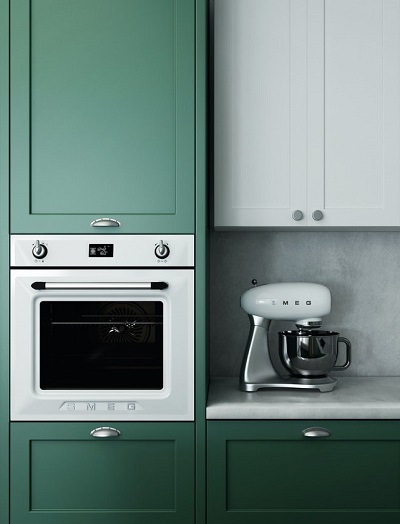Should we consider appliances energy use in our energy modelling?
Appliances are an inseparable part of our day to day life. Each building is unique in its associated activities and the most contributing factor is the appliances that make those activities possible. According to recent research, nearly 25% of all energy use in the residential sector is due to the use of appliances. So it seems out of the question that appliances energy use should be considered in a thorough energy modelling. or is it?!
Here, we seek to navigate through Australian regulations and energy efficiency pathways for answers.

Appliances: part of energy model?
When you are undertaking an energy model, you may come upon questions like:
- do I consider the energy use of a guest room fridge in a hotel?” or
- do I consider the energy consumption of computers in an office building?
Well, the answer depends on the two follow-up questions:

Are the appliances part of the base building?
The definition of base building appliances is pretty straightforward. It goes something like this:
Can you unplug and relocate the installed appliance without any destruction, alteration or heavy works? and is this appliance directly serves and affects all building occupants/tenants?
If the answer to the first question is “yes” and to the second one is “no”, then the appliance is not to be considered as a base-building appliance, but rather a portable appliance. As an example, office computers are not base-building appliances whilst office ventilation system is.
Note that the energy use of appliances is different from heat gains from appliances. For an accurate energy model, you must identify the heat gains from all appliances with precision or the cooling energy demand could be far unrealistic.
What is the energy modelling used for?
If you are modelling to demonstrate compliance with the code, then you got to follow the bread crumbs to what the regulations demand. Here, we focus on JV3 & Green Star modelling as the two major Australian Compliance pathways.
However, if you are modelling your building for non-regulatory purposes (e.g. feasibility assessments) then you must weigh on what portion of appliances energy use is to be considered.
When do we account for base building appliances energy use?
JV3 modelling
JV3 modelling is an Alternative Solution for energy efficiency compliance for commercial buildings under NCC Volume one. Using an energy model through JV3 modelling guidelines, you will have to demonstrate how your Proposed Building generates less greenhouse gas emissions than the NCC Reference Building. For this matter, building services must be accounted for in the energy model. NCC describes services as below:
Service, for the purposes of Section J in Volume One, means a mechanical or electrical system that uses energy to provide air-conditioning, mechanical ventilation, heated water supply, artificial lighting, vertical transport and the like within a building, but which does not include—
- systems used solely for emergency purposes; and
- cooking facilities; and
- portable appliances.
[NCC Vol 1.0, Schedule 3 (definitions), Page 662]
According to the above, no portable appliance energy use (electricity, gas, . . .) should be accounted for in the calculation of greenhouse gas emissions. However, heat gains from the above sources must be taken into account for the heating and cooling portion of greenhouse gas emissions.
Note that JV3 modelling could not be applied to the Class 2 building and Class 4 part of the building. Energy rating tools are the mandatory compliance pathways for these types of buildings and hence, appliances energy use are not appropriated in them. Find out more…
Green Star modelling
Green Star modelling could be used as an Alternative Solution (called JV2 modelling) for energy efficiency compliance with NCC Volume one. But more importantly, Green Star modelling is used to address ESD initiatives for a proposed building and to obtain Green Star Rating. Using an energy model through Green Star modelling guidelines, you will have to demonstrate how your Proposed Project consumes less energy than the Green Star Reference Project. For this matter, Proposed Project services must be accounted for in the energy model. According to Green Star Energy Use Calculation Guide:
Heat loads due to process loads must be accounted for, whether as airside or waterside system loads, but direct energy consumption
due to operation of the process is not included, except for appliances in residential projects (NCC Class 2).[Energy Use calculation guide – Version 1, Calculation Requirements, Page 10]
According to the above, the design team must identify and implement all process load heat gains including portable appliances in the energy model. However, direct energy use of those must not be included in the energy use calculation unless it’s a Class 2 building. Green Star guidelines consider appliances in a Class 2 building with prolonged steady use and a predicted pattern of operation. Hence, portable appliances are to be considered in the Green Star model energy use calculations.
Feasibility assessment
If you are undertaking a feasibility assessment to investigate for example:
- to install solar PVs for your building or
- to install trigeneration system or Combined Heat and Power (CHP),…
you absolutely need to consider all appliances energy use in your energy model. A holistic energy model used for feasibility assessment must consider the energy use of all the appliances using realistic operation profiles and power rates. This is regardless of the regulatory guidelines for energy modelling that are mentioned above, however, energy compliance with the code must be verified using any of the pathways (e.g. JV3, DtS,…).
